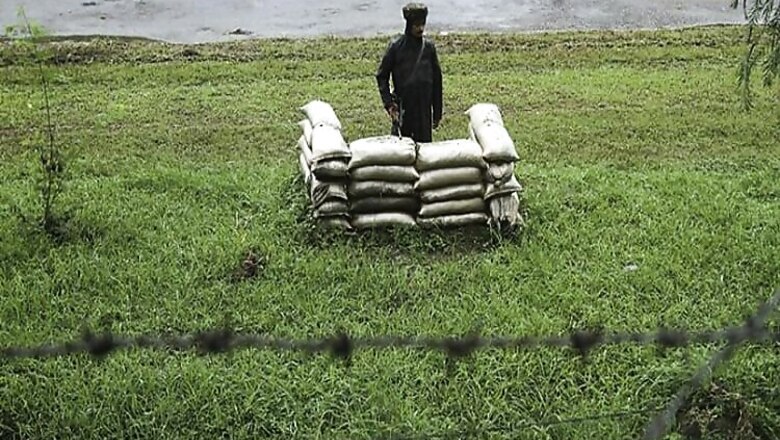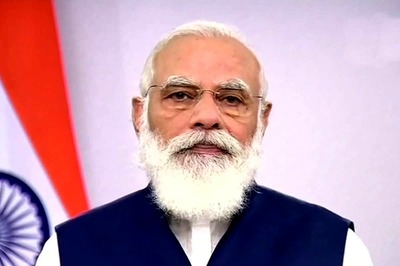
views
The martyrdom of Major Moharkar and three soldiers while on a routine patrol in the Keri sector of Jammu and Kashmir was followed, after 48 hours, by an Indian Army cross-border strike which killed at least three Pakistani soldiers. This tit-for-tat action is now seen as something that has become the new normal along the Line of Control (LoC) separating India and Pakistan. There is a similar pattern with ceasefire violations (CFV) — one side initiating and the other responding immediately.
Questions are often asked whether these eye for an eye tactics serve any larger purpose. After all, we are not only losing our soldiers but also civilians living in border areas. The civil population is most impacted due to displacement from their homes and the debilitating impact on their daily lives.
Violent incidents close to the border, like the Pathankot attack, also hold India-Pakistan relations hostage as they are seen as being more directly linked to the Pakistani state, as opposed to terrorist actions which take place in the villages of Kashmir valley.
Let me begin by clarifying the Indian Army's tactical thought process. The Army believes that a calm LoC is a preferable operational environment. Indian soldiers deployed on the border in Jammu and Kashmir have two main tasks. The first is to maintain the sanctity of the LoC (which is not marked out on ground) by ensuring that there is no intrusion by Pakistan to grab our territory. The second is to maintain a strong counter-infiltration grid to prevent terrorists from sneaking into our territory.
In the forested and mountainous terrain along the border, these are extremely challenging tasks even under normal conditions, and best performed when the LoC is calm. If hundreds of mortar bombs are raining down you, it is difficult to carry out patrolling and spot a small group of infiltrators who may be attempting to sneak into the area. The fact that our patrols are still carrying out their duty despite the Pakistani firing is reflective of the bravery and dedication of our officers and men. But it comes with a huge risk.
Pakistan Army’s view is just the opposite. A calm LoC not only makes the pushing in of terrorists more difficult but is also reflective of an improving situation in Jammu and Kashmir. The latter goes against the Pakistani narrative of a state embroiled in violence.
We have seen this playing out since 2013, particularly in the Jammu region. 2012 was the most peaceful year in the history of Jammu and Kashmir insurgency. The total casualties of terrorists, security forces and civilians were only 117. Terrorism had been almost completely wiped out from areas South of Pir Panjal. In sharp contrast to this improvement, the LoC heated up.
CFVs by Pakistan army increased from 114 in 2012 to 347 in 2013, 583 in 2014 and 720 in 2017. Over 90% of these were in Jammu region. The LoC turned violent with many soldiers martyred in firing, ambushes and BAT actions, and bodies being mutilated, the latest incident being on 1 May this year in the Poonch sector.
How should the Indian soldiers on the LoC react to such provocation? The reality is that the LoC is a brutal place. Any misstep is fatal. It is impossible for any military leader to salute his comrade's coffin without promising retribution. Deaths which remain unavenged will lead to a disastrous loss of morale. Troops are already under tremendous pressure and they need the highs of tactical victories.
This game is playing out daily on the LoC. Some incidents get highlighted in the media but most don't. However, successful actions contribute to a sense of ‘moral ascendancy’ over your enemy. In warlike situations, as Napolean said, “Moral is to the physical as three to one.” But is there a war on at the LoC? For a soldier whose post is being bombarded by artillery, mortars, rocket launchers and machine guns, it is as close to war as he can get.
Is it possible to break out of this seemingly endless cycle of violence? The ball is clearly in Pakistan army's court. The Indian Army has made it known to them in border meetings and through the DGMO level talks that calm will only return to the LoC if their army takes actions to check the movement of terrorists from their side and stop cross-border violations. If infiltration, ambushes, CFVs and IED attacks continue, there can be no peace.
Is there any strategic sense to the Indian Army's actions along and across the LoC? In the short term, the answer may appear to be in the negative because Pakistan appears undeterred and continues its support to anti-India terrorists. However, we do not have many options. Diplomacy between the two countries is perhaps at its lowest level. There are no economic linkages that can be exploited.
Dependency on a third country to force a change in Pakistani attitude have not been successful.
Under these circumstances, military pressure seems to be the only path. Pakistan Army cannot be permitted to plan terrorist actions in comfort and without fear of retribution. They must feel the pain of lost comrades. It will be a long and somewhat bloody haul but today there appears to be no other alternative to compel Pakistan to change its ways.
(The author is former Northern Commander, Indian Army, under whose leadership India carried out surgical strikes against Pakistan in 2016. Views are personal.)




















Comments
0 comment